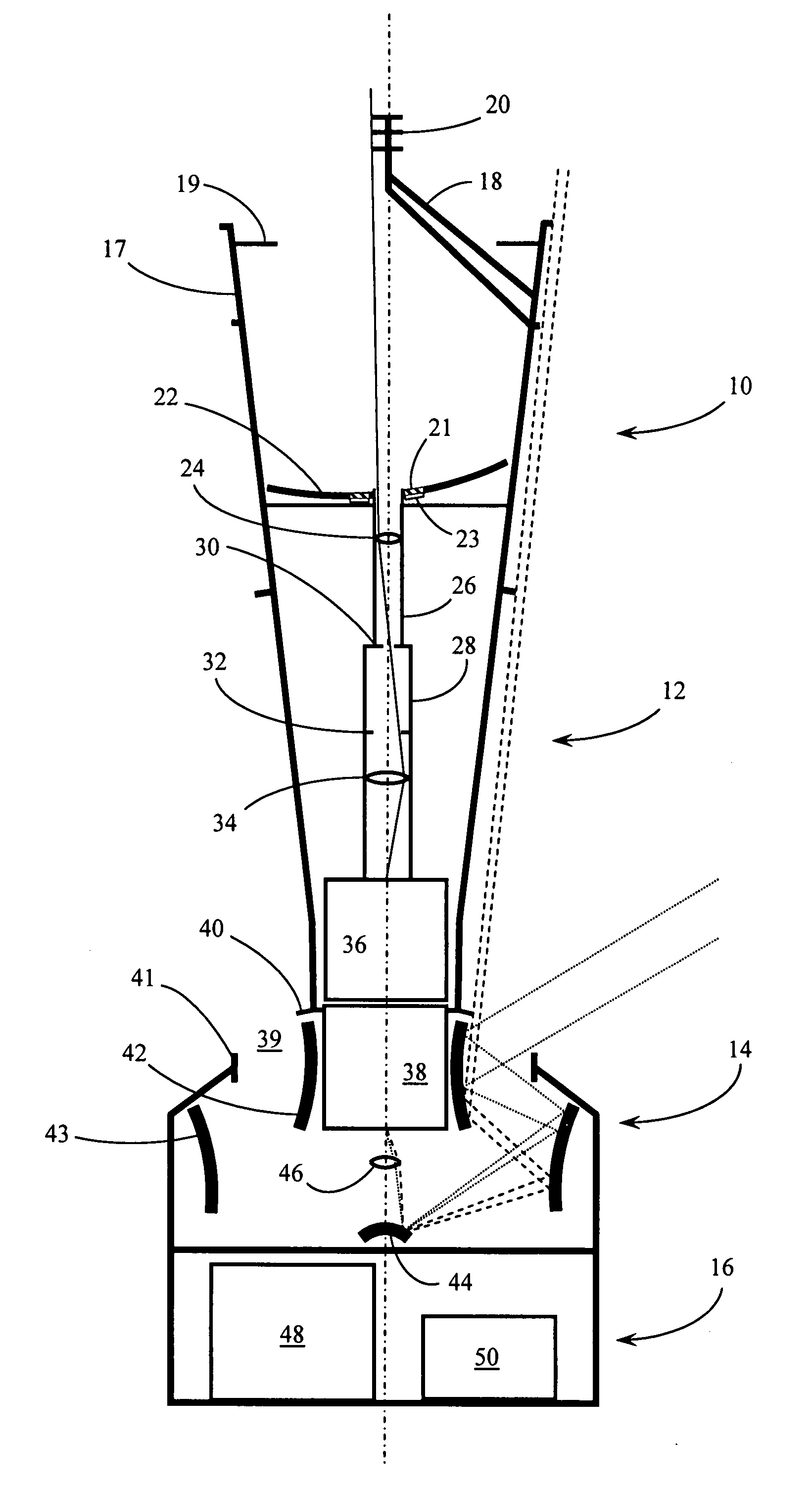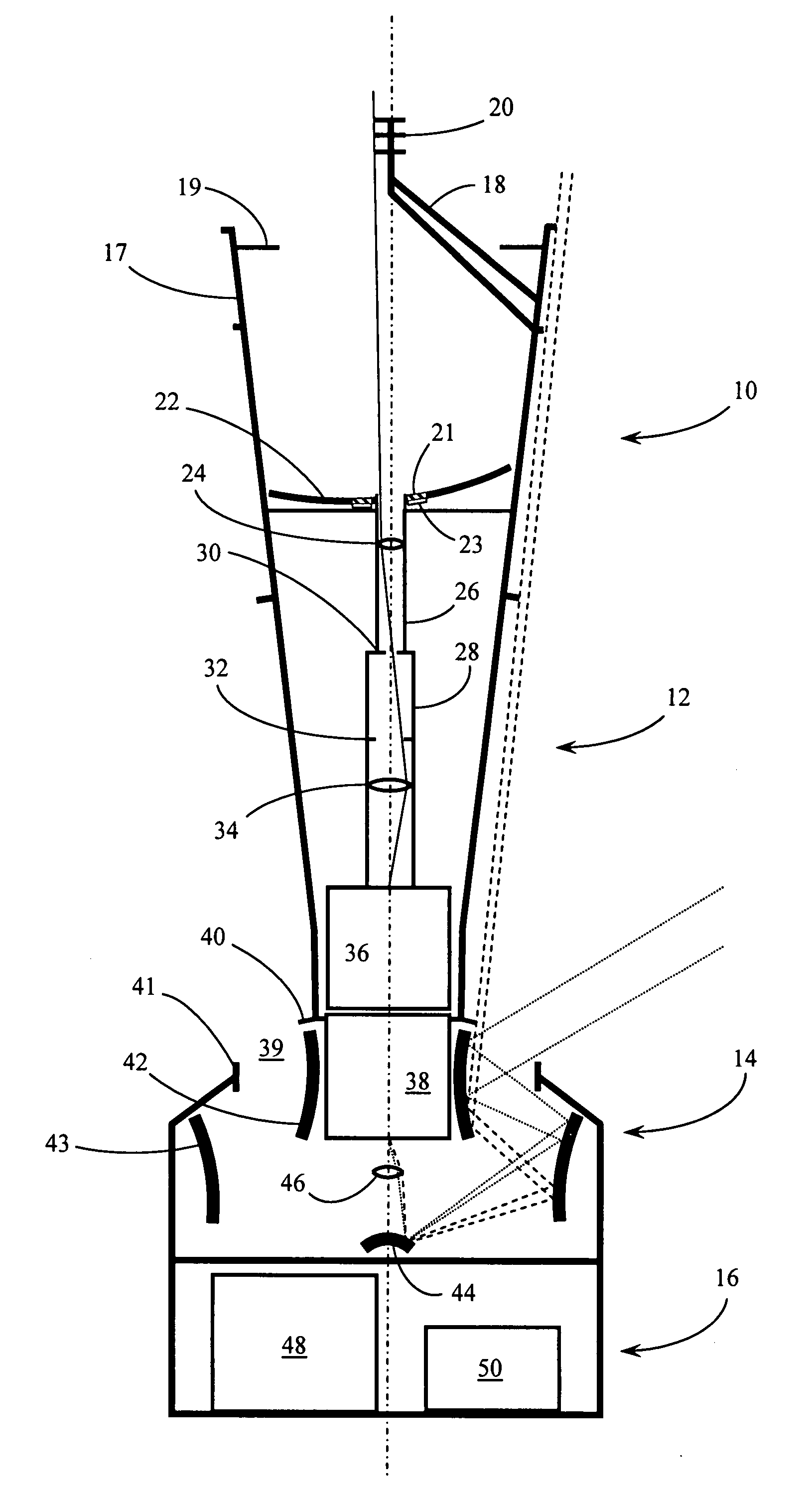Dual acquisition miniature all-sky coronagraph
- Summary
- Abstract
- Description
- Claims
- Application Information
AI Technical Summary
Benefits of technology
Problems solved by technology
Method used
Image
Examples
Embodiment Construction
[0025]To address the goals and objectives described above for CME imagery the present invention provides a Dual Acquisition Miniature All-Sky Coronagraph (DAMASC), that can accomplish both operational and scientific observation of CMEs in a single, compact package suitable for deployment on many types of spacecraft. The imaging system operating characteristics balance several design considerations such as spacecraft accommodation, overall cost considerations, stray light level, and data quality.
[0026]The imaging system instrument incorporates both a conventional disk-occulted coronagraph and an advanced annular wide-field camera in a single package (see FIG. 1). The combined instrument is small (approximately 17 cm diameter×50 cm long), lightweight (˜4 kg), and self-contained, with a single three-point kinematic mount to the host platform and a single cable connection for power and C&DH. The minimum total power requirement is ˜5 watts. Thermal control is accomplished by way of passi...
PUM
 Login to View More
Login to View More Abstract
Description
Claims
Application Information
 Login to View More
Login to View More - R&D
- Intellectual Property
- Life Sciences
- Materials
- Tech Scout
- Unparalleled Data Quality
- Higher Quality Content
- 60% Fewer Hallucinations
Browse by: Latest US Patents, China's latest patents, Technical Efficacy Thesaurus, Application Domain, Technology Topic, Popular Technical Reports.
© 2025 PatSnap. All rights reserved.Legal|Privacy policy|Modern Slavery Act Transparency Statement|Sitemap|About US| Contact US: help@patsnap.com


